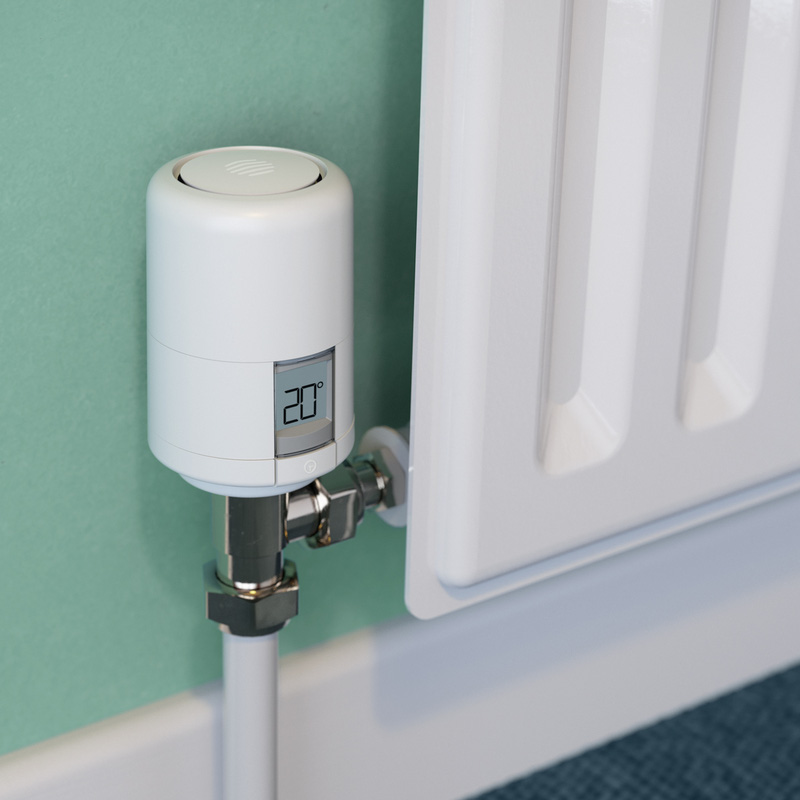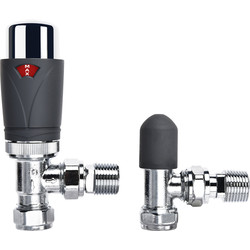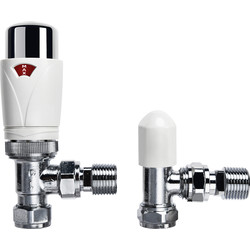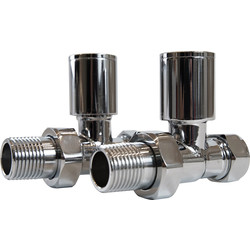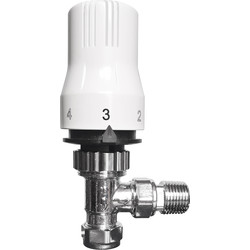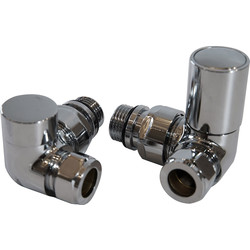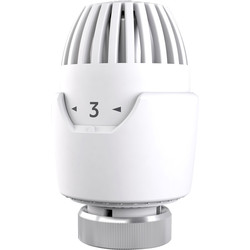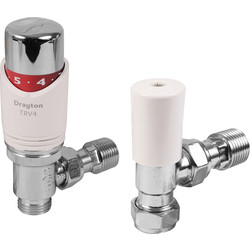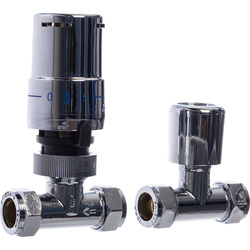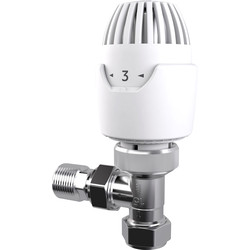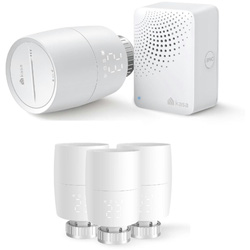The purpose of radiator valves is to control the flow of hot water into your radiators so they can heat up the room. By opening up the valve, more hot water can flow into the radiator and warm up your home, while a closed valve will shut off the water supply.
There are four main types of radiator valves to choose from; thermostatic, manual, smart thermostatic, and dual fuel. The one you choose will depend on your routine and energy usage, how often you need a room heated, and your budget – both upfront and long-term.
The hot water pipes in your central heating system, as well as the radiator inlets – where the water goes in – will impact the type of radiator valve you need, as well as any add-ons such as extension valves.
Types of Radiator Valves
There are four different types of radiator valves that you can choose from and these are manual valves, thermostatic valves, dual-fuel valves, and smart thermostatic valves. Each type of radiator valve works in slightly different ways and offers their own benefits.
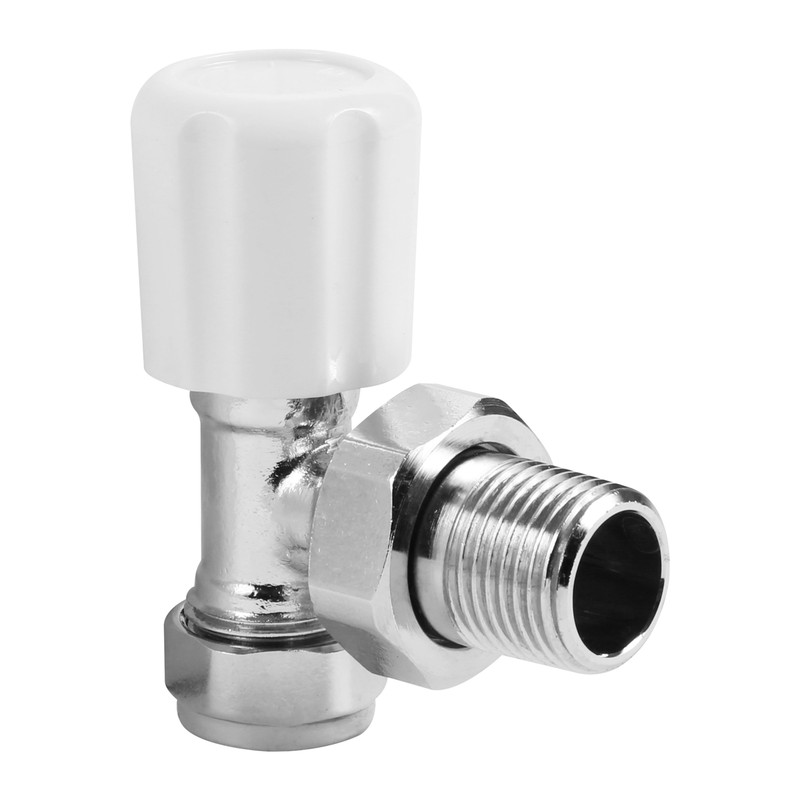
Manual Valves
Manual valves work like a tap; turned to allow the water to run, and then manually turned off when it reaches the desired temperature in the room. Manual valves are really easy to use, eliminating the need to preset a temperature. Simply turn the radiator off when the room has warmed up.
Manual valves allow you to heat one room at a time by just turning on one radiator, making them ideal for less commonly used rooms. They’re also much smaller in size than other types of valves - so they’re not wasting any space.
The main thing to consider with manual valves is that you need to keep an eye on them or they could waste energy by continuing to heat the room when it’s not needed. Not only can this waste energy, but it could become dangerous if the room gets too hot. Manual valves are mainly used for radiators that are on all the time such as towel radiators.
Advantages
-
Easy to use
-
Heat one room at a time
-
Smaller than other valves
Things to Consider
-
Could waste money if not turned off
-
No thermostat could make the room and radiator dangerous
-
Mainly used on radiators that are on continuously
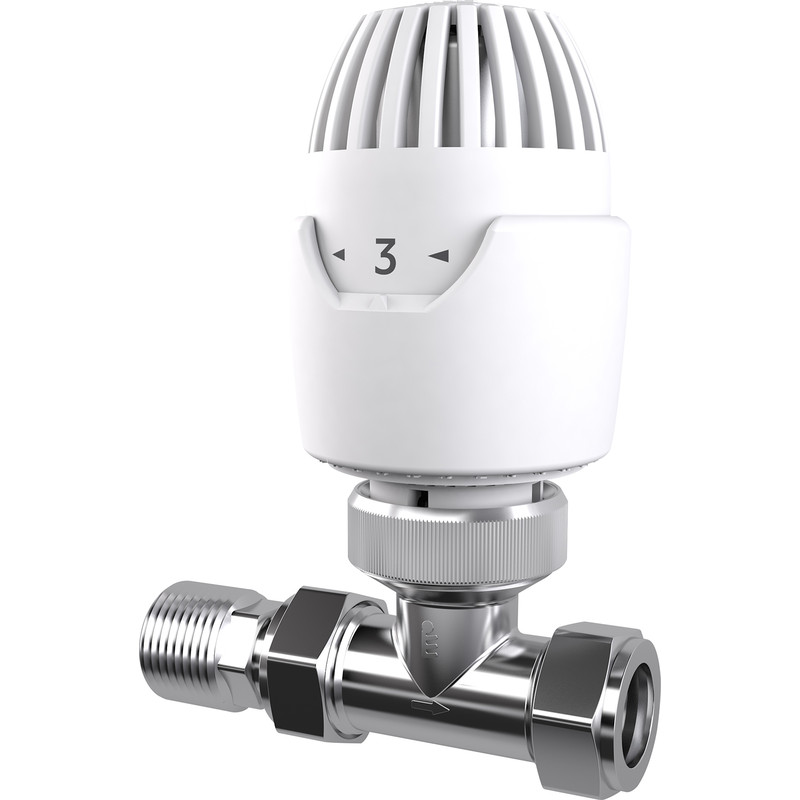
Thermostatic Valves
Thermostatic radiator valves (TRVs) give you the option to control the temperature of individual radiators, usually with numbers between 1 and 5 – 1 being the lowest, 5 being the highest. Generally, 2 is about 18 degrees, and 4 is 24 degrees. TRVs use a valve to control the flow of water into the radiator. The valve head expands when it's cold and contracts when the room is hot.
TRVs help to avoid energy wastage because they stop hot water flow to the radiator once the room is at the desired temperature – unlike manual valves which need to be turned off. They’ll also help to prevent frost damage by having a small amount of hot water flowing if your home gets particularly cold, while you're away.
In steamy bathrooms, you need to set the valve higher than you would in a standard room. To use the frost protection settings, your boiler has to be on as they can't turn the boiler on while you're away. Having a TRV in the same room as a thermostat could cause it to malfunction and overheat the room.
Advantages
-
Avoids energy wastage
-
Prevent frost damage to pipes
-
Provides individual room control
Things to Consider
-
Valve needs to be set higher in a bathroom
-
Boiler has to be on to protect from frost
-
Should not be in the same room as a thermostat
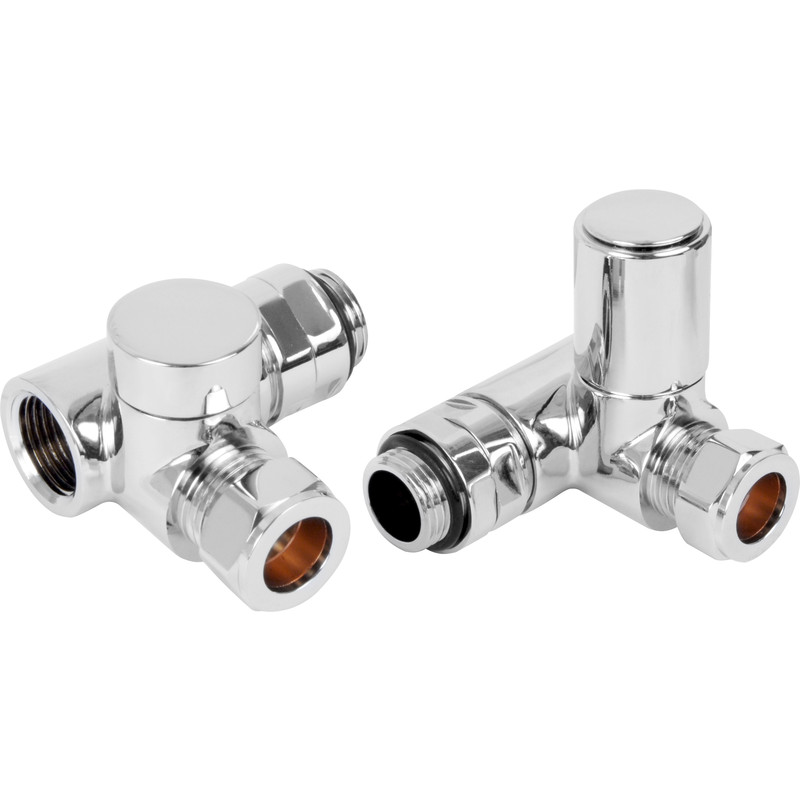
Dual-Fuel Valves
Dual-fuel valves are often used for towel radiators in the bathroom, allowing the radiator to be heated by electricity or the central heating system. They use a T-piece – a T-shaped fitting – to connect the valve to an electric heating element.
These types of valves allow you to warm the radiator all year round if you need to. In the winter, they’ll use your central heating system like any other radiator, but can be switched on using electricity in the summer when you don’t want to heat the whole house, making them an energy efficient option.
When using a dual-fuel valve, consider that electricity can be more expensive compared to gas, so you could end up spending more money heating the radiator in the summer when you’re not using central heating. Also, if your current radiator isn’t suitable for dual-fuel heating, it could be costly to replace or convert it.
Advantages
-
Warm radiators year-round if required
-
Uses the most cost-effective option depending on the season
Things to Consider
-
Electricity can be more expensive than gas per kWh
-
Radiators may need to be replaced or converted to make it suitable
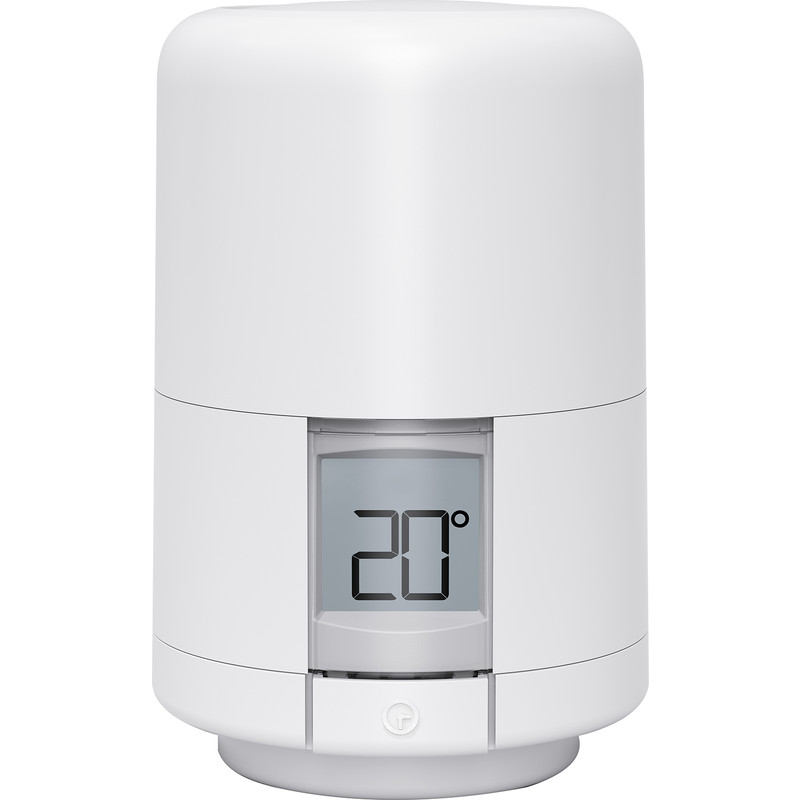
Smart TRVs
Smart thermostatic radiator valves (Smart TRVs) work like a regular TRV, but they control the temperature of each radiator more accurately using specific temperatures. You can control smart TRVs from your phone or computer when they’re linked to a smart thermostat.
They’re energy-efficient because they can be turned on and off remotely, and are very accurate compared to other valves. A smart TRV allows you to split your home into zones to heat up individual rooms.
Keep in mind they may have a higher upfront cost compared to other valve types. That said, a smart TRV could pay for itself in the long run with the money you may save on energy, but you'll need to think about your typical energy consumption and daily habits before making a decision. It's worth noting that a smart thermostat in the same room as a smart TRV could cause the system to malfunction and overheat the home.
Advantages
-
Energy efficient
-
Use exact temperatures
-
May increase the house value
Things to Consider
-
Upfront cost is higher
-
Energy savings differ per household
-
Cannot be used in the same room as a smart thermostat
Key Radiator Valve Features
Valve Position
Radiator valves need to be compatible with the position of the inlets and the hot water pipes. The most common valve position in the UK are angled valves, which are ideal for homes with pipework coming up from the floor or from the wall behind. Straight valves are used when the water flows straight along a wall or up from the floor in the radiator with no angles. Corner valves are similar to angled valves but don’t protrude from the bottom of the radiator as much.
Extension Valves
Extension valves are used to bridge the gap between the radiator and the main valve, which can increase flexibility during installation of new valves and radiators. You’ll also find rigid radiator valve extensions which can be cut to size for added flexibility.
Drain Valves
Drain valves allow you to drain your central heating system or individual radiators if you have a problem like a leak or sludge build up. They are often fitted on your lowest radiator, the one closest to your boiler, usually on the flow side. To use a drain valve, a hose is fitted to it and the tap is opened.
Lockshield Valves
Lockshield valves are found on every radiator, and they control the amount of water flowing back into the pipes - helping to balance your central heating so you can efficiently heat your home. Lockshield valves are generally only adjusted by engineers working on the system. Universal valve caps can replace the existing cap if it’s lost or discoloured.
Colour
Many valves will come in white, or a combination of white and chrome, which will often match the radiator. However, you can also find radiator valves in modern and traditional styles and a range of colours including anthracite, bronze, and chrome. This way, you can choose the style that suits your style and your existing radiator.

